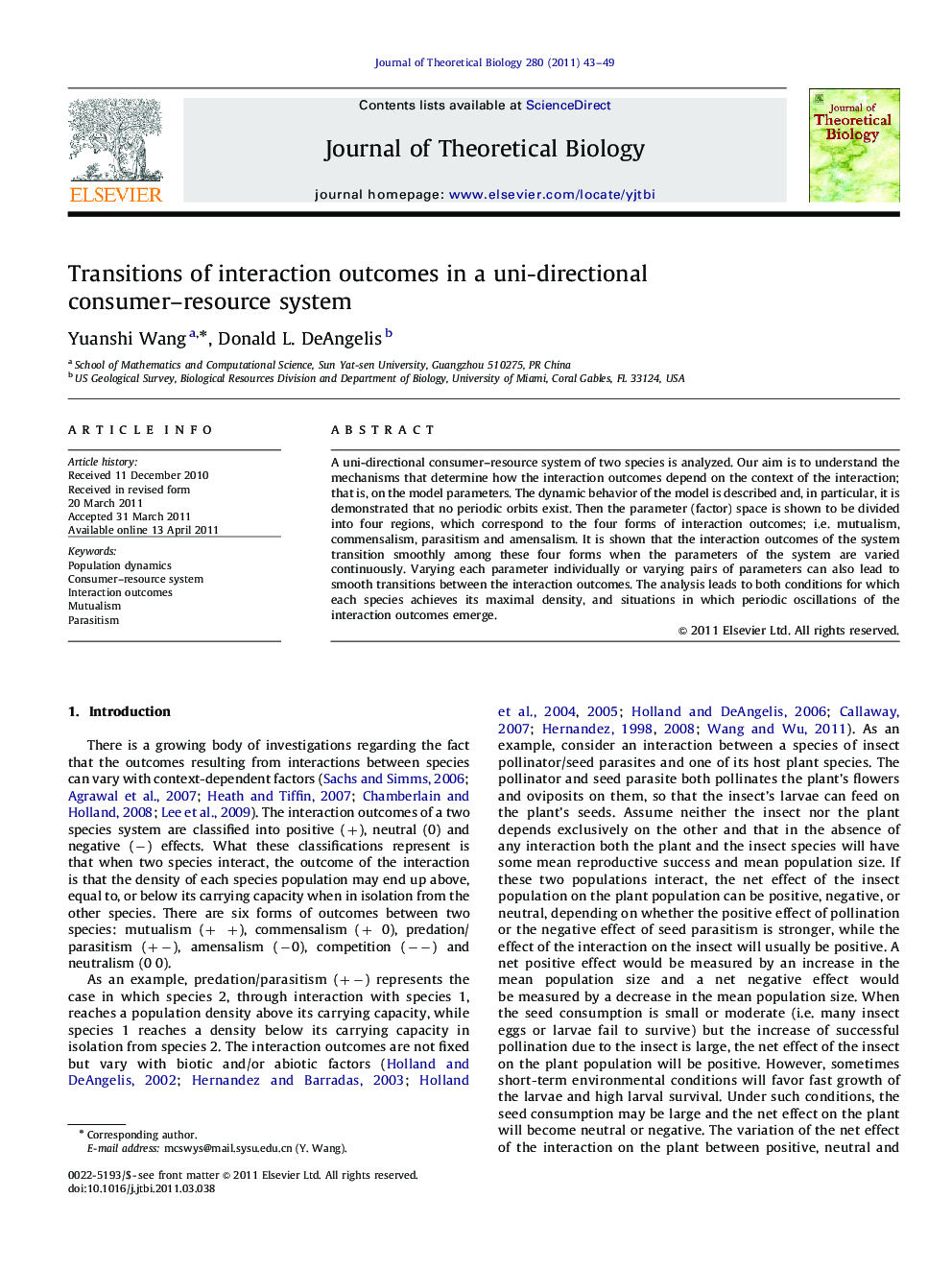| Article ID | Journal | Published Year | Pages | File Type |
|---|---|---|---|---|
| 4497069 | Journal of Theoretical Biology | 2011 | 7 Pages |
A uni-directional consumer–resource system of two species is analyzed. Our aim is to understand the mechanisms that determine how the interaction outcomes depend on the context of the interaction; that is, on the model parameters. The dynamic behavior of the model is described and, in particular, it is demonstrated that no periodic orbits exist. Then the parameter (factor) space is shown to be divided into four regions, which correspond to the four forms of interaction outcomes; i.e. mutualism, commensalism, parasitism and amensalism. It is shown that the interaction outcomes of the system transition smoothly among these four forms when the parameters of the system are varied continuously. Varying each parameter individually or varying pairs of parameters can also lead to smooth transitions between the interaction outcomes. The analysis leads to both conditions for which each species achieves its maximal density, and situations in which periodic oscillations of the interaction outcomes emerge.
► The dynamics of a uni-directional C–R model is described, where no periodic orbits exist. ► We show mechanisms that how the outcomes depend on the context of the interaction. ► The parameter (factor) space is shown to be divided into four regions. ► The outcomes transition smoothly among the four forms as parameters vary continuously. ► The analysis leads to situations in which periodic oscillations of the outcomes emerge.
